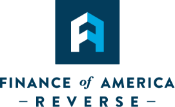It’s the home you raised your children in, the home you built careers and memories in. Maybe you’ve spent decades hosting family, friends, or coworkers in the carefully remodeled dining room, or perhaps your home is a quiet and familiar refuge from the fast-paced change of the world. For some, it’s the place they’ve dreamed of spending retirement with their partner, and for others, it’s a place too full of precious memories to think of going somewhere else. A home isn’t just a primary asset for many seniors. It’s a place they love and want to remain.
More than 60% of retirees live in the same home they lived in when they retired. They love their home: the years or decades of care, repair, and work they’ve put into it, the memories they’ve made in it, the familiarity and reassurance of it all. They love their community: the local connections, churches, recreational activities, clubs, classes, and amenities that bring routine and activity into life. For some, family and friends live close by, and a move might mean sacrificing valuable time together. Maintaining this close connection is of the utmost priority.
A survey conducted by Merrill Lynch found that most retirees want to age in place. About 85% prefer to receive extended care in their own home and bringing in extra help as they age. About 10% of retired seniors prefer an assisted living facility, and only 4% prefer to live in a family member’s home. But without the help of able family members or the available staff of an assisted living facility, this often means planning for safety and accessibility adjustments like support rails, amendments to stairs, and bathroom remodeling. If not now, it’s likely that future additional expenses will accrue to sustain comfortable independence.
For many who wish to age in place, a reverse mortgage is an excellent tool for creating a financially secure retirement. Retirees who own their own home can maximize that asset with a reverse mortgage. With FAR as your partner, you’re not alone. Homeowners and home-buyers age 62 and older can use tax-free reverse mortgage proceeds to enjoy better the years spent in their home.
You can choose to receive these funds as a line of credit, as a steady income, or as a lump sum, depending on your financial situation. If you are concerned about how an illness or injury could affect your ability to stay in your home, or if you are interested in using the financial asset that is your home to help support you through retirement, a reverse mortgage is something to consider. Even if you plan to downsize your home to meet your needs better, or want to move closer to family, a HECM reverse mortgage can help finance that new home without an extra mortgage payment.
If you are one of the tens of millions of baby boomers who don’t feel financially prepared, there may be a real solution for you. A reverse mortgage puts your hard-earned equity to work so you can maintain or elevate your lifestyle during retirement. Just like your 401K, IRA, or annuities, home equity is a powerful financial tool that can significantly enhance your retirement funding plan. Contact a Finance of America Reverse, LLC (FAR) representative today to learn more about the benefits of reverse mortgages and how they may help you secure long-term financial freedom.
This article is intended for general informational and educational purposes only, and should not be construed as financial or tax advice. For more information about whether a reverse mortgage may be right for you, you should consult an independent financial advisor. For tax advice, please consult a tax professional.















I WANT TO KEEP UP TO DATE ON RETIREMENT TRENDS
Follow Us.